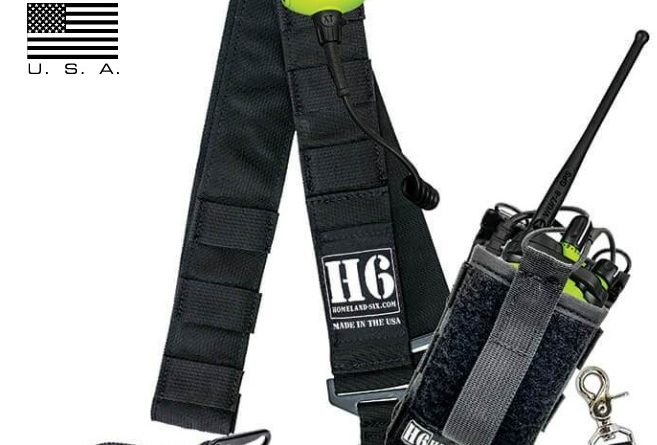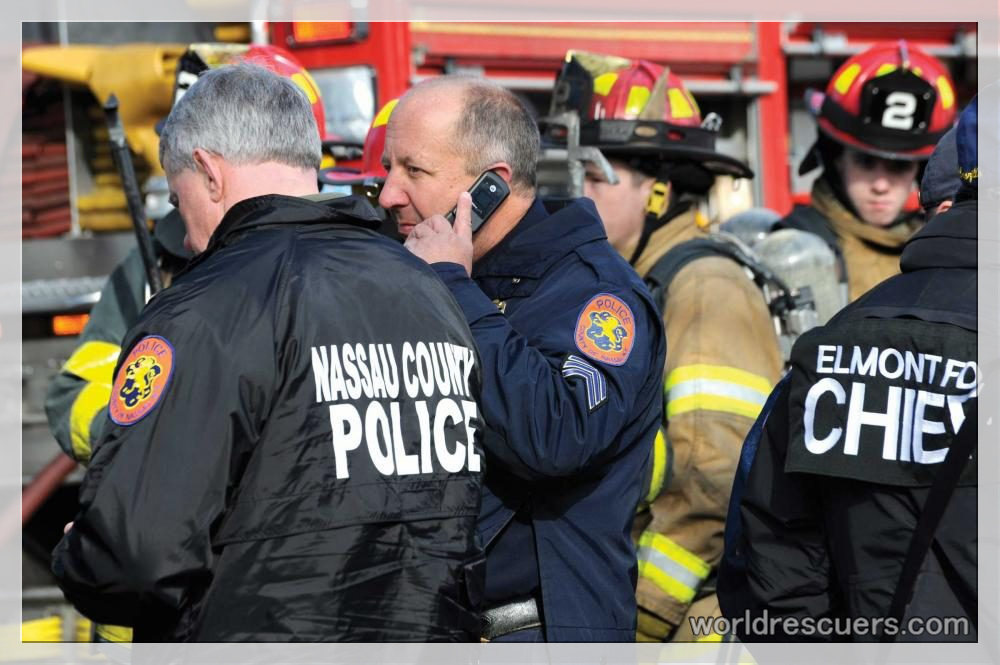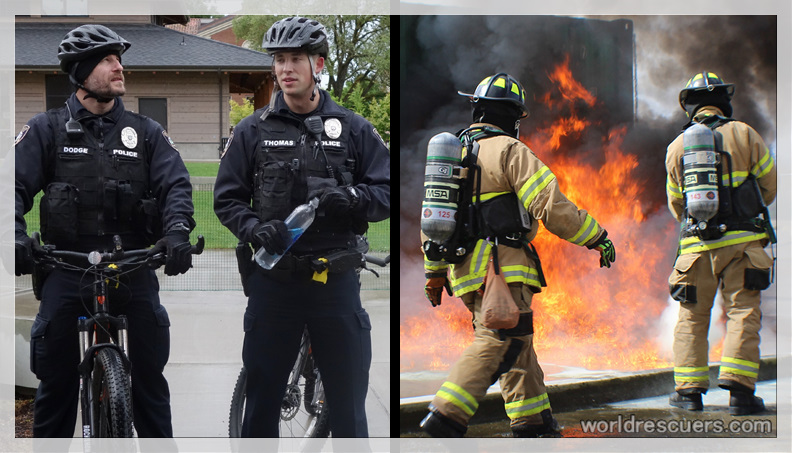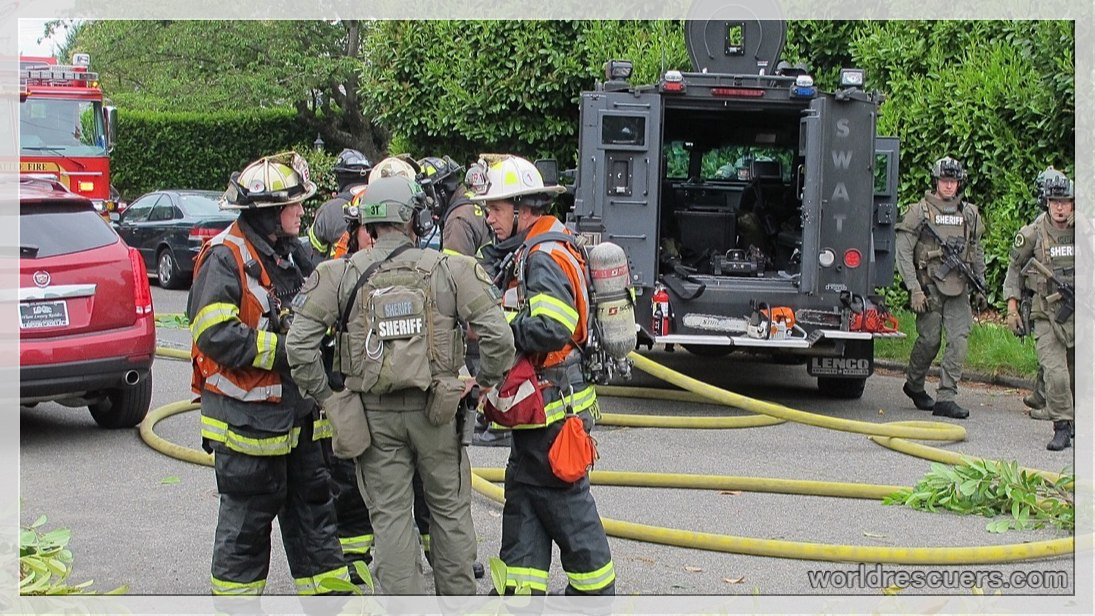
Incident Communication
Introduction
Fire and police officers work together during incidents. But they don’t always communicate with each other in the same way as you would expect. This can create confusion when firefighters and police officers work together during an incident.

Officers and firefighters talk to each other in different ways.
Fire and police officers use different systems of communication to communicate with each other. Firefighters use a more formal, structured communication system designed to keep everyone on the same page. At the same time, they are working together in an emergency situation. Police officers tend to use less formal language than firefighters when talking to each other. However, both groups have their own radio frequencies, so they would need a way to communicate with each other while attending an incident scene at the same time.
These differences may seem insignificant to us, but they can mean the difference between life and death.
Fire and Police officers have different training, equipment, and communication protocols. These differences may seem insignificant to us, but they can mean the difference between life and death for those in their charge.

Firefighters are trained to deal with fires that involve smoke, heat, or toxic materials. A fire can be caused by an accident or deliberate act. Police officers are trained to deal with road accidents involving vehicles. They also investigate crime scenes at which there is evidence of criminal behaviour such as theft etc, where firefighting would not be appropriate due to health & safety issues (e.g., noxious gases).
The MCI is a multi-casualty incident.
The MCI is a multi-casualty incident. It’s an acronym for multi-casualty incidents. This means that the event involves more than one victim. An MCI can include fire and police as well as paramedics in addition to other first responders such as firefighters and EMTs.
The MCI may also involve victims who are not members of your agency or any other local or state agencies that are responding to the incident at hand.
When an MCI happens, it is vital for Fire and police officers to be able to communicate clearly with each other.
Firefighters are trained to fight fires and help people who are injured or trapped in a building. Firefighting skills are extremely important when responding to an MCI because firefighting will require different techniques than would be used by a police officer. Police officers have been trained in crisis management techniques that include using force only as a last resort. However, there may be occasions when it would be necessary for them to use their weapons or even injure someone in order to protect themselves or others from harm.
Firefighters are trained to follow a strict protocol of communication called the Incident Command System.
Firefighters are trained to follow a strict protocol of communication called the Incident Command System. This protocol is used by firefighters, police officers, and other emergency responders in large-scale incidents that require an entire department to respond. It’s also used in smaller fires where multiple agencies will be involved. The number varies depending on your location but usually hovers around eight or more departments responding at once.

The Incident Command System (ICS) helps ensure that everyone knows what they’re doing during an emergency situation without having to rely on having someone in charge who can direct them all at once from their command post (the place where you would normally go if there was no fire). ICS has evolved over time since its inception in 1969, with new updates being added periodically based on lessons learned from past incidents. However, it remains one of the most effective ways of communicating during these types of events due mainly because it allows each person involved in an incident with their own job description within which they must perform their duties before moving on to another task while maintaining situational awareness throughout each step along their path towards resolution
Police officers have a less formal system of communication in place.
Police officers are not trained in the same way as firefighters. They have their own radio frequencies and use a different system of communication called “10 codes.”
The 10 codes are:
- Fire (starts with a fire truck or ambulance)
- Police (starts with an officer)
In addition, both groups have their own radio frequencies. So they would need a way to communicate with each other while at the scene of an incident. The Fire Department wants to keep its own channels open for emergency calls and fire-related activities. But they also have to make sure that any information they receive from the police is clear enough for them all to understand. This is where you come in!
Because both groups have their own terminology and phraseology. There must be some way to convert this information so that everyone understands what’s going on.

The firefighters use the Incident Command System (ICS) for all incidents involving fire suppression and rescue operations. The ICS is a standardized approach to incident management throughout the world using pre-planned procedures. It can provide an organized method for quickly determining priorities, assigning responsibilities, and coordinating activities between agencies involved in an incident.
It includes three phases:
- Initial Phase (pre-incident),
- Preparation Phase (first 30 minutes),
- Command & Control Phase (30–60 minutes).
Police officers are trained differently than firefighters. However, they, too use some common phrases when communicating over their radios during emergency situations such as fires or other types of natural disasters like hurricanes or tornadoes, etcetera…
This can create confusion when fire and police officers work side by side during an incident.
The MCI is a multi-casualty incident. But there are still some standard procedures in place for both firefighters and police officers to follow. The firefighters have been trained using the Incident Command System (ICS), which provides a set of guidelines for effective communication during an emergency. This system encourages teamwork between all parties at an incident and allows them to work together as one unit rather than competing with each other.
The police officers’ system of communication is less formal than the ICS. However, it does allow them access to resources such as radio equipment that can provide better information about what’s happening at any given time.
Conclusion
This can create confusion when firefighters and police officers work side by side during an incident. The best way to overcome this is to ensure that there is mutual understanding between both groups. This can be achieved through training and communication.

Hi, I am John Smit a Captain in Fire Department City of Newyork with over years of experience in the field of Firefighting and HSE. My passion for fire safety started when I was a young boy and witnessed a neighbor’s house go up in flames along with precious lives. Since then, I had dedicated my life to ensuring the safety of buildings, properties, and individuals in case of a fire and medical emergencies.


